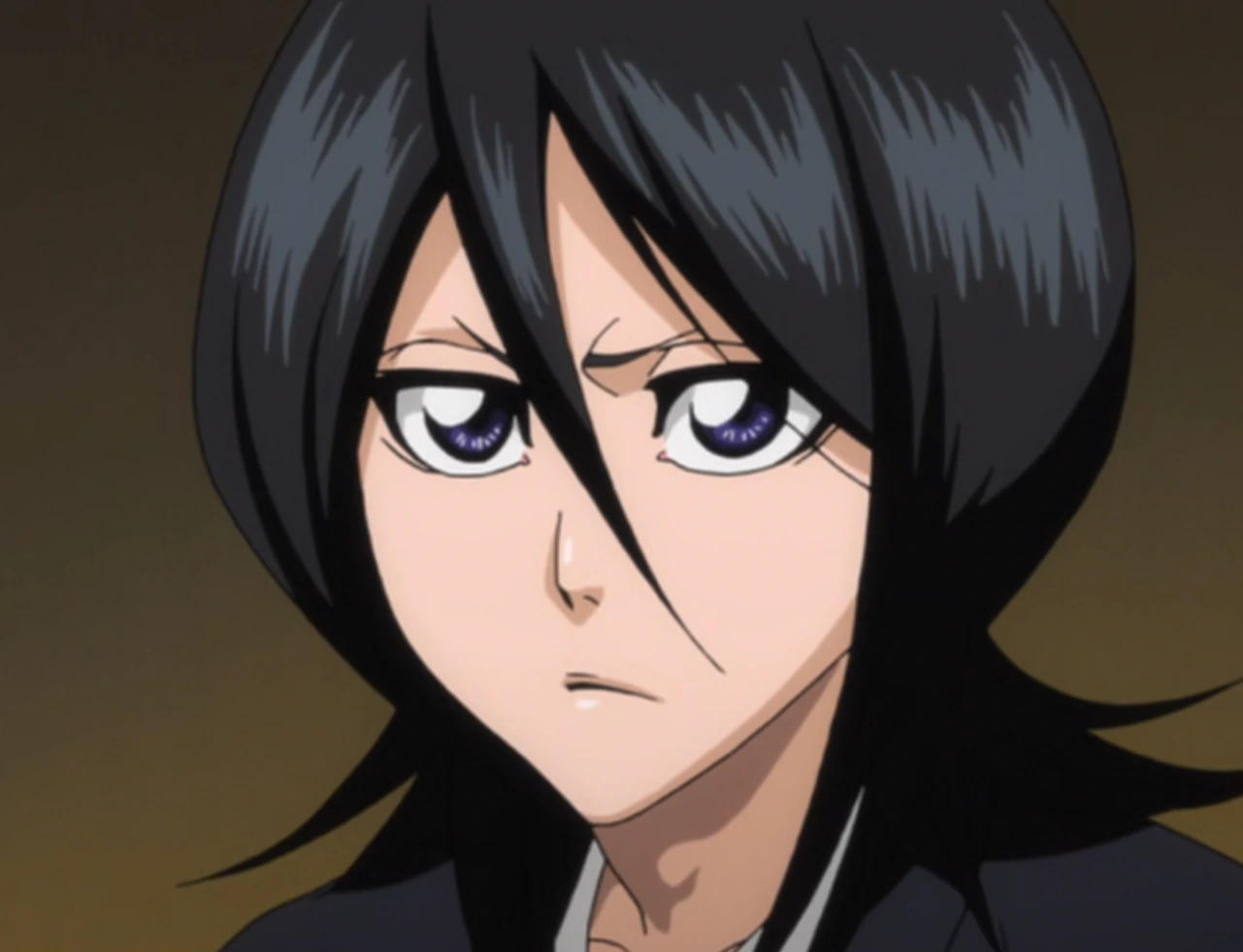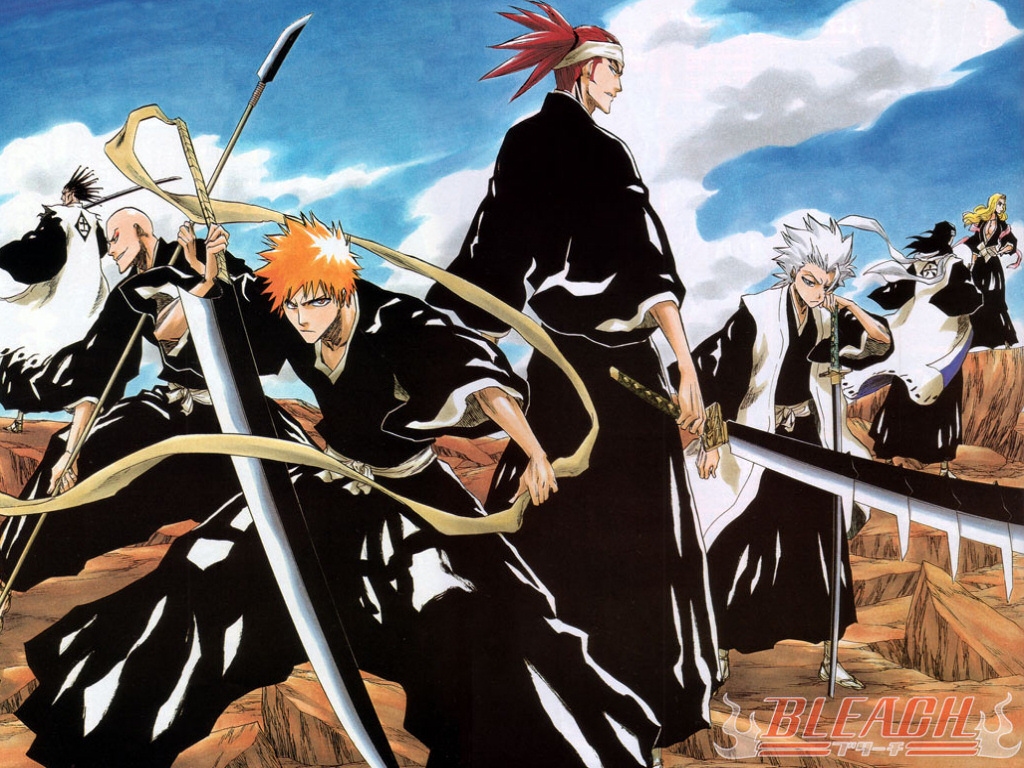Bleach
 |
| The first volume of Bleach, published in Japan by Shueisha on January 5, 2002 |
Bleach has been serialized in the Japanese manga anthology Weekly Shōnen Jump since August 2001, and has been collected into 58 tankōbon volumes as of December 2012. Since its publication, Bleach has spawned a media franchise that includes an animated television series that was produced by Studio Pierrot in Japan from 2004 to 2012, two original video animations, four animated feature films, seven rock musicals, and numerous video games, as well as many types of Bleach-related merchandise.
Viz Media obtained foreign television and home video distribution rights to the Bleach anime on March 15, 2006. Cartoon Network's Adult Swim began airing Bleach in the United States on September 9, 2006. Viz Media has licensed the manga for English-language publication in the United States and Canada, and has released 51 bound volumes as of November 2012 as well as published chapters of Bleach in its Shonen Jump magazine since November 2007. Viz Media released the first Bleach film, Bleach: Memories of Nobody, on DVD in North America on October 14, 2008. The second film, Bleach: The DiamondDust Rebellion, was released on September 15, 2009. The third film, Bleach: Fade to Black, was released on November 15, 2011. In addition, Hulu released subtitled versions of the anime a week after each episode aired in Japan.
Volumes of the manga have sold more than 80 million copies in Japan, and is one of the most sold manga in the United States. The anime adaptation has been similarly received; it was rated as the fourth most popular anime television series in Japan in 2006 and held a position amongst the top ten anime in the United States from 2006 to 2008. The series received the Shogakukan Manga Award for the shōnen demographic in 2005, and is among the best-selling manga issues in both Japan and the United States.
Plot
 |
| Ichigo Kurosaki |
As some time passes and Rukia has yet to return to the Soul Society, her Soul Reaper superiors learn about her whereabouts and actions and sentence her to death for performing the illegal act of transferring her powers. A confrontation due to this ends with two high ranking Soul Reapers (Shinigami) injuring Ichigo and taking Rukia to their world The Soul Society. Although he is unable to stop Rukia's departure to the Soul Society, Ichigo resolves to rescue her with the aid of several of his spiritually aware classmates, Orihime Inoue, Yasutora (Chad) Sado, and Uryū Ishida, and the ex-Soul Reapers Yoruichi Shihōin and Kisuke Urahara. Once in Soul Society, Ichigo and company battle against the elites of the Soul Reaper military and strive to reach Rukia before her execution.
It is revealed that Rukia's execution and Ichigo's rescue attempt both had been manipulated by a very high-ranking Soul Reaper, Sōsuke Aizen, who was previously believed to have been murdered, as part of a far-reaching plot to take control of the Soul Society. Aizen betrays his fellow Soul Reapers and allies himself with the strongest of the Hollows, the Espadas, whom he enhances. Aizen thus becomes the main antagonist of the series, and the Soul Reapers form an alliance with Ichigo.
At this point, Bleach chronicles the war between the Soul Reapers, the Espadas, and Aizen. After Aizen defeats the Soul Reaper captains, Ichigo undergoes intense training with his father Isshin, who turns out to be a former Soul Reaper, in order to become strong enough to battle Aizen alone. As Aizen is weakened by his battle with Ichigo, a spell that Urahara had previously hidden within him activates and seals him, thus ending the conflict and leaving the Soul Society to imprison him. As a result of using an incredibly powerful attack in order to defeat Aizen, Ichigo loses all of his Spiritual Pressure and becomes an ordinary human.
 |
| Rukia |
Following these events, a group of Quincies called the "Vandenreich" declares war on the Soul Society. Ichigo once again ventures to Hueco Mundo, which has also been invaded by the Vandenreich; at the same time, the captains in the Soul Society battle a powerful group in the Vandenreich army known as the "Stern Ritter". During the invasion, several Captains had their bankai stolen by the Stern Ritter. Meanwhile Captain Yamamoto took revenge on the Quincy who stole Sasakibe's bankai and then immediately sought out their leader who he identified as "Juha Bach" who up till now was referred to by the other Quincy as "His Majesty". Despite using his bankai to attempt to kill him, Juha surprises Yamamoto by stealing his bankai, then instantly kills him using his abilities. Ichigo then arrives to take on Juha Bach and has his bankai subsequently destroyed and origins called into question. During the aftermath, the Royal Guard arrive to take Ichigo and several of his comrades to the Spirit Palace where they begin recuperation and training for the next fight against the Vandenreich. After the recuperation, Renji and Ichigo had a test. Renji passed. Ichigo failed and was sent back to Karakura Town. After being told he is not a Soul Reaper, his father reveals that Ichigo's mother was a Quincy.
Production
 |
| Shinigami's |
Tite Kubo has cited influences for elements of Bleach, ranging from other manga series to music, foreign language, architecture, and film. He attributes his interest in drawing the supernatural and monsters to Shigeru Mizuki's GeGeGe no Kitaro and Bleach's focus on interesting weaponry and battle scenes to Masami Kurumada's Saint Seiya, manga that Kubo enjoyed as a boy. The action style and storytelling found in Bleach are inspired by cinema, though Kubo has not revealed any specific movie as being an influence for fight scenes. When pressed, he told interviewers that he liked Snatch but did not use it as a model. Kubo has also stated that he wishes to make Bleach an experience that can only be found by reading manga, and dismissed ideas of creating any live-action film adaptations of the series.
Bleach's creative process is focused around character design. When writing plotlines or having difficulties generating new material, Kubo begins by thinking of new characters, often en masse, and rereading previous volumes of Bleach. Kubo has said that he likes creating characters that have outward appearances that do not match their true nature—an element that can be found in many Bleach characters—as he is "attracted to people with that seeming contradiction" and finds an "urge to draw people like that" when he works. The terminology used in Bleach has a variety of inspirations, with each category of characters bearing a different linguistic theme. Many of the names for swords and spells used by Soul Reapers were inspired by ancient Japanese literature. Hollows and Arrancars are often associated with Spanish terms because the language sounded "bewitching and mellow" to him. As for Fullbringers, their Fullbring is associated with the English vocabulary when either releasing or already have released their Fullbring. Finally, Quincy and Bounts have been known to associate with the German language, making Kubo's world of characters diverse in race and language as well.

Subscribe to:
Post Comments (Atom)
0 comments:
Post a Comment